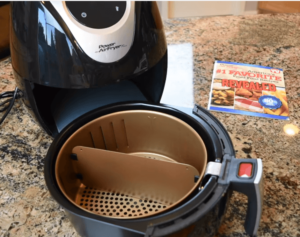Last Updated on February 1, 2024
When it comes to cooking, garlic is a staple ingredient known for its distinctive flavor and aroma. Whether you’re whipping up a quick weekday dinner or preparing a feast for a special occasion, the chances are that garlic will be part of your recipe. However, what happens when you find yourself without fresh garlic? This is where garlic powder comes in as a handy substitute. In this article, we’ll explore the question: Can you substitute garlic powder for minced garlic? We’ll explore the differences between these two forms of garlic, the scenarios where substituting makes sense, and some tips to get the best results in your cooking.
Can You Substitute Garlic Powder For Minced Garlic?
The short answer is yes, you can substitute garlic powder for minced garlic. However, it’s important to understand the nuances of this substitution. Fresh minced garlic has a more potent and fresher flavor compared to garlic powder, which is more concentrated and has a slightly different taste profile. When substituting, you should consider the type of dish you’re making. For instance, garlic powder works well in cooked or baked dishes, as it blends easily and distributes its flavor uniformly. However, fresh garlic is preferable for raw dishes like salads or dressings because of its zest and texture. The key is to balance the flavors according to your recipe and personal taste preferences.
How to Substitute Garlic Powder for Minced Garlic
- Understand the Conversion Ratio: The general rule of thumb is that one clove of fresh garlic equals 1/8 teaspoon of garlic powder. This conversion can vary slightly depending on the garlic powder’s potency and the garlic cloves’ size.
- Adjust for Cooking Time: Garlic powder needs less cooking time than fresh garlic. Add it to your dish towards the end of the cooking process to prevent it from becoming bitter due to overcooking.
- Consider the Texture: Garlic powder lacks the texture that minced garlic provides. If your dish relies on the texture of minced garlic for mouthfeel, consider adding a textural component like finely chopped onions or shallots.
- Balance the Flavors: Garlic powder can sometimes have a more concentrated flavor. Start with a small amount and taste as you go, adjusting the quantity to achieve the desired flavor profile.
- Storage and Shelf Life: Fresh garlic and garlic powder have different shelf lives. While fresh garlic can sprout or go bad, garlic powder has a much longer shelf life, making it a convenient and long-lasting option for your pantry.
Can You Substitute Garlic Powder for Minced Garlic?
Garlic is a staple in kitchens worldwide, cherished for its robust flavor and aromatic presence in a multitude of dishes. But what happens when you’re in the middle of cooking and realize you’re out of fresh garlic? Can garlic powder step in as a suitable substitute? This post explores this question, diving into recipes where garlic powder shines, potential drawbacks, and considerations regarding the loss of freshness and aroma when opting for this dried alternative.
Recipes That Work Well with Garlic Powder
When fresh garlic isn’t an option, garlic powder can be a convenient and effective substitute in many recipes. This dehydrated, ground version of garlic is particularly useful in dishes where garlic’s flavor needs to blend seamlessly without the texture of minced garlic. Think of dry rubs for meats, seasoning blends for marinades, or even in breading for fried foods. Garlic powder excels in baked or slow-cooked dishes, as it evenly distributes the garlic flavor throughout the dish. Additionally, it’s a time-saver in quick recipes, like stir-fries or sautés, where mincing fresh garlic might slow you down. However, it’s essential to remember that garlic powder is more concentrated than fresh garlic. As a general rule, 1/4 teaspoon of garlic powder can be used to replace one clove of fresh garlic.
Potential Drawbacks and Considerations
While garlic powder offers convenience and a longer shelf life, it’s important to consider a few drawbacks. First, garlic powder’s flavor profile differs significantly from fresh garlic’s. Garlic powder possesses a milder, slightly sweeter taste, which may not provide the pungent kick that fresh garlic brings to dishes like garlic bread, pasta aglio e olio, or fresh salsas. It’s also worth noting that when used excessively, garlic powder can sometimes impart a slightly bitter taste. Additionally, the texture is an important consideration. If your dish benefits from fresh garlic’s crunch or visual appeal, garlic powder won’t be an adequate substitute. Finally, consider the age of your garlic powder; as it ages, it loses potency, requiring you to use more to achieve the desired flavor.
Loss of Freshness and Aroma
The most notable difference when substituting garlic powder for minced garlic is the loss of freshness and aroma. Fresh garlic releases a burst of flavor and a distinct aroma that can be a game-changer in cooking. This is especially true in cuisines that rely heavily on the freshness of their ingredients, like Mediterranean or Asian dishes. The zesty, sharp bite of fresh garlic, which can be pivotal in simple dishes, is muted in garlic powder. While garlic powder provides a more uniform and subtle flavor, it lacks fresh garlic’s intensity and depth. This is particularly evident in raw or lightly cooked dishes where garlic’s fresh, spicy quality is desired. Therefore, while garlic powder is a practical alternative in many cooking scenarios, it’s important to consider its role in your dish before substituting it.



